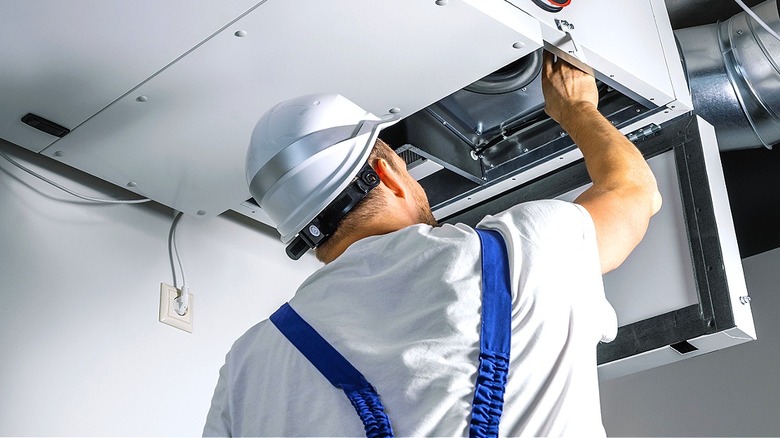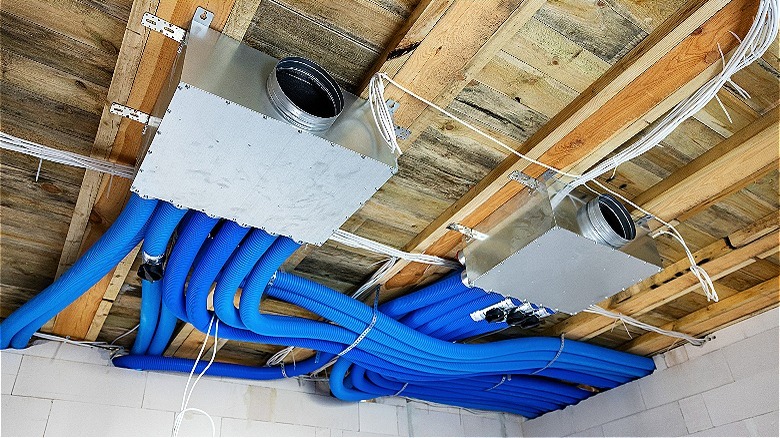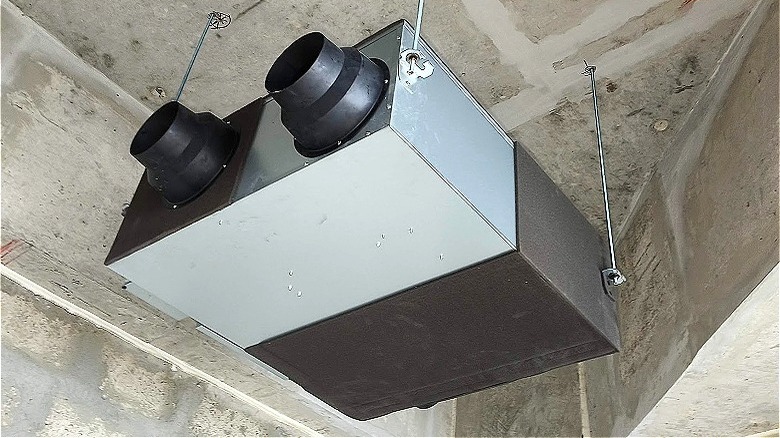HGTV's Mike Holmes Explains The Difference Between HRV And ERV Air Systems
The initialisms HRV (heat recovery ventilation) and ERV (energy recovery ventilation) refer to two common types of air systems, both of which are considered more energy-efficient than traditional systems. Both HRV and ERV systems help to improve a home's "breathing," and on his podcast "Holmes on Homes" (via YouTube), HGTV's Mike Holmes discussed the two systems in depth with Sonny Pirotta, a Panasonic indoor air quality expert, and Bob Deeks, president of RDC Fine Homes; specifically, their differences and which one he prefers (answer: ERV).
"When the ERV came out, I, myself, said, "OK, what the hell's the difference between HRV and ERV?" and then I started to look into it and right now, I believe everyone should have an ERV, and not an HRV," he said. Both air systems operate similarly by recovering the energy that's expelled when stale air is sent out, but the main difference between the two is in how each manages the exchange between the incoming and outgoing air streams. While HRVs recover hot and cool air, ERVs recover both, as well as the moisture in the air. This key difference ultimately determines which is best for your home, as you'll have to factor in climate, building structure, the amount of humidity your household generates, and other unique household needs.
HRV air systems
"Heat recovery ventilation. What that means is it's gonna recover the heat from your furnace; it's gonna be more efficient, help your furnace be more efficient, the air more efficient," explained Mike Holmes in Episode 6 of his "Holmes on Homes" podcast. An HRV air system primarily recovers heated and cooled air as it goes out and transfers it to the incoming air.
This helps maintain a comfortable indoor temperature since it recovers some of the heat from the heater that goes out in the winter and some of the cool from the A/C in the summer. By doing this, your systems lose less energy as they work. However, HRVs don't help when the air is too dry in the winter or too moist in the summer.
By being unable to control humidity, you can experience some discomfort at certain times of the year or in really hot climates with an HRV air system. HRVs work better in homes where you don't have to worry about your heating system drying out the air, like with an electric baseboard heater, and in homes with a lot of people so you won't have to rely on them to balance the humidity.
ERV air systems
An ERV system takes the HRV one step further because it recovers heat and moisture from the outgoing air and can transfer both to the incoming air. By regulating the amount of moisture entering the building during the ventilation process, ERVs improve both comfort and indoor air quality. This makes them more versatile than HRVs and means they can be used in a broader range of climates. To Mike Holmes, it's better to be able to have that moisture control with your ventilation system.
As Holmes explained in his podcast on YouTube, ERVs especially come in handy during allergy season, for example, when you open your windows to let in fresh air but allergens come in. "This is where the ERV comes in ... to help balance that [air], clean it, and get it out the home," he said. With all this said, whichever air system you have in your home, note that it will need to be properly calibrated so it can effectively balance the indoor and outdoor airflows.


